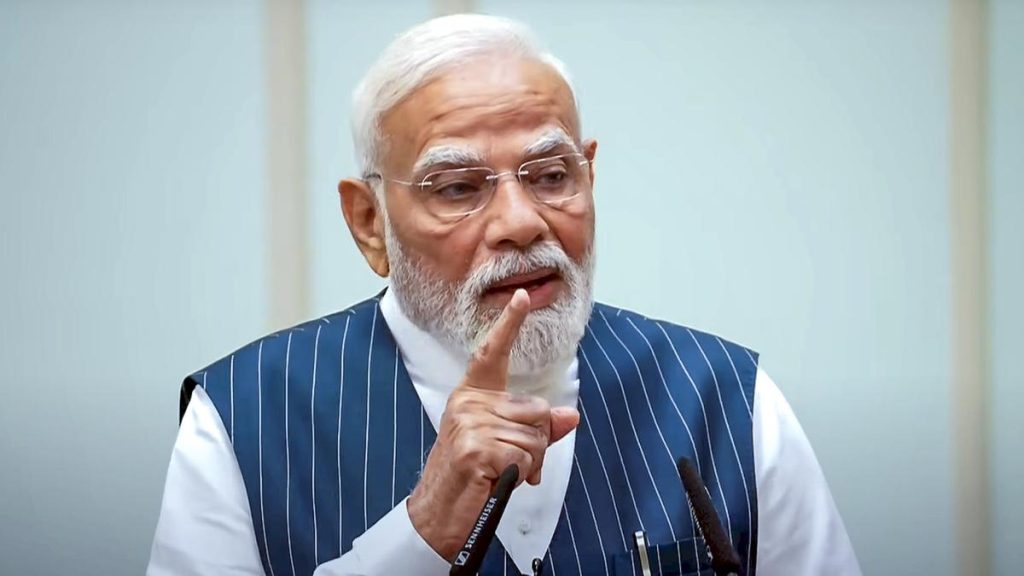Now Reading: Streaming: The Hidden Threat to Cinema’s Legacy
-
01
Streaming: The Hidden Threat to Cinema’s Legacy
Streaming: The Hidden Threat to Cinema’s Legacy

Speedy Summary
- The article discusses how the rise of streaming platforms is negatively affecting the customary movie industry.
- Streaming services are changing audience behavior, leading to decreased interest in theatrical releases.
- Films released directly to streaming platforms frequently enough prioritize quantity over quality due to higher demand for content.
- Movie theaters face challenges as fewer people opt for the cinema experience and prefer home-viewing options provided by streamers.
- This shift has implications for filmmakers, who are adapting their storytelling and production strategies to align with streaming-driven trends.
Indian opinion Analysis
The global trend towards increased reliance on streaming platforms signals a transformative shift in entertainment consumption. For India, this presents both opportunities and challenges. On one hand, India’s thriving film industry might benefit from access to international audiences through streaming services. Though,it risks undermining long-standing cultural traditions of enjoying films in cinemas-traditions deeply embedded in Indian society.
As more Indian filmmakers move towards creating content specifically tailored for these platforms, they may need to strike a balance between adhering to creative storytelling standards and meeting commercial demands from streamers that emphasize quantity over depth. Moreover,if cinemas face financial strain due to reduced audiences nationwide,there could be ripple effects on employment within the broader entertainment economy.
Ultimately, this transition compels both creators and consumers in India’s movie landscape toward fundamental shifts that may redefine viewing habits while necessitating resilience across film production chains.
Read more: [Link Placeholder]
Quick Summary
- Movies have evolved culturally and technologically over the past century but their core experience has remained consistent-until recently.
- The rise of home streaming services is reshaping the purpose of movies, possibly reducing cinema outings to nostalgic tales for future generations.
- Streaming platforms blur distinctions between movies and other types of “content,” presenting everything as part of a unified stream on digital interfaces.
- Films today, especially those created during the streaming era, frequently enough resemble direct-to-video productions in pacing, plot structure, and storytelling approach.
Indian Opinion analysis
The shift from traditional cinematic experiences to consumption via streaming signals a profound change in audience behavior globally. For India-a country deeply attached to its vibrant movie industry-the implications are potentially transformative. Bollywood routinely delivers cinematic spectacles that thrive on collective viewing in theaters. With more Indian audiences opting for convenience over grandeur through streaming platforms, filmmakers might need to adapt storytelling styles or invest more heavily in platform-exclusive content.
Additionally,this trend could widen access disparities between urban users with high-speed internet and rural populations still dependent on traditional cinema screens.India’s film industry must balance innovation with accessibility as cultural preferences evolve alongside technology’s progress.
read MoreQuick Summary:
- Title: The Electric State
- Release Date: March 14, 2025.
- An official poster for the movie has been released, offering visual details of the project.
Indian Opinion Analysis:
The upcoming release of The Electric State signals important global interest in cinematic storytelling with cutting-edge visuals and complex narratives. While specific relevance to India isn’t directly mentioned, a widely anticipated international film like this could present collaboration opportunities for Indian film industries aspiring to transition further toward high-tech productions and broaden their reach in global markets. Additionally, Indian audiences who have shown an increasing appetite for innovative Hollywood films may find such projects compelling, further strengthening cross-cultural exchanges through media consumption.
Read MoreQuick Summary
- Runtime: 128 minutes
- Director(s): Anthony Russo, Joe Russo
- Cast Includes: millie Bobby Brown, Chris Pratt, Woody Harrelson, Giancarlo Esposito, Stanley tucci, Ke Huy Quan among others.
- Writers: Christopher Markus and Stephen McFeely
- Main Genre: Sci-Fi
- Release Window: 2025
Streaming platforms are increasingly emphasizing quantity over quality in film production to sustain subscriber interest. This approach has caused the decline of mid-budget films while favoring micro-budget originals and blockbuster movies as safer bets. Criticisms have surfaced regarding movies like The Electric State and Zack Snyder’s Rebel Moon, with claims that they feel artificial and lack the essence of traditional cinematic storytelling. additionally, there is concern about the disappearance of physical movie libraries as streaming becomes dominant.
!Netflix’s Rebel Moon screenshot
Indian Opinion Analysis
The prioritization of quantity over quality by global streaming platforms reflects an evolving economic model driving entertainment consumption worldwide. For India-a market experiencing rapid expansion in digital streaming-the repercussions could be multifaceted. On one hand, it may offer Indian filmmakers increased opportunities for funding original productions targeting niche audiences; on the other hand, it could limit resources for well-crafted cinematic projects traditionally favorable in theaters or hybrid release formats.
The gradual disappearance of physical movie collections may signal long-term shifts that could challenge cultural preservation efforts within india’s rich film heritage dominated by regional cinema alongside Bollywood staples. Stakeholders must consider blending local traditions with innovative forms to steer clear from producing hollow imitative works lacking depth or identity-as critics continue to warn about certain global outputs like Rebel Moon.Balancing creativity with commercial agendas will be critical for ensuring lasting growth across India’s burgeoning media landscape.
For more details: Source
Quick Summary
- A significant portion of early cinematic history, especially silent films, has been lost due to poor archival practices and incidents like fires.
- Physical media formats such as DVDs, Blu-rays, VHS, and LaserDiscs have helped preserve movies over the years.
- Modern movie preservation is increasingly reliant on streaming services and studios since fewer productions are released on physical media.
- streaming platforms frequently enough alter or censor content compared to original versions found on physical media. Some titles go entirely unavailable unless archived by collectors or pirates.
- streaming platforms prioritize passive-viewing-friendly content geared toward casual consumption rather than traditional cinema experiences that demand full attention from audiences.
- Theaters continue to thrive for major blockbuster releases but face declining visits for smaller productions as audiences increasingly opt for home entertainment options with improved technology like OLED TVs.
Indian Opinion Analysis
The shift away from physical movie media raises vital implications for India’s long-standing engagement with film culture-both as a consumer base and a thriving production hub in Bollywood and region-specific industries like Tollywood or Kollywood. While India has embraced digital streaming services, it must reckon with potential challenges of preserving its cinematic heritage amidst this global trend.
Physical archives have traditionally played a crucial role in safeguarding Indian cinema classics across eras spanning decades; their diminished role may risk wiping culturally significant works that future generations could otherwise cherish.
On one hand, India’s fast-growing access to internet penetration makes these digital trends feasible locally-but maintaining uncensored legacy untouched likely warrants privacy/rule attentiveness!
Read more: https://howtogeek.com_COLLECTIONQuick Summary:
- A new DCU action film is being developed with a star-studded cast, featuring David Corenswet, Rachel Brosnahan, Nicholas Hoult, and others.
- The film is written by James Gunn and produced by Peter Safran.
- Warner Bros. Pictures will serve as the distributor while Lars P. Winther and Nik Korda are executive producers for the project.
- Discussion highlights concerns regarding the impact of streaming services on movie preservation and creative quality in filmmaking.
Indian Opinion Analysis:
The development of another high-profile DCU film underscores Warner Bros.’ ongoing commitment to its superhero franchise amid global competition from Marvel Studios and other entertainment platforms. India’s role as one of the world’s largest markets for films means that such international projects frequently enough gain significant traction domestically, fueling further interest in Hollywood productions among Indian audiences.
However, concerns raised about streaming services altering traditional cinema practices are noteworthy-India’s bustling local film industry may also need to consider these shifts carefully. If streaming becomes dominant globally with AI-driven productions leaving less room for human creativity or archival preservation issues – this could impact how audiences perceive authentic storytelling across media landscapes in India too.


























